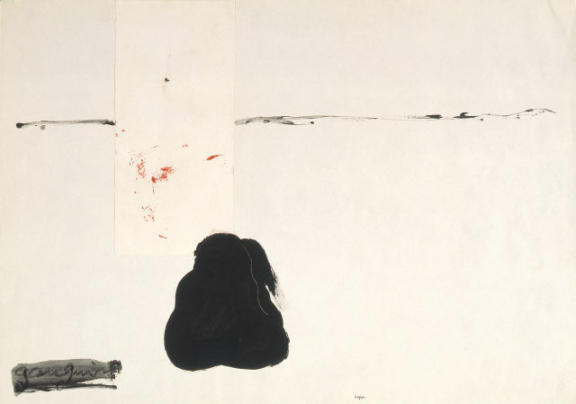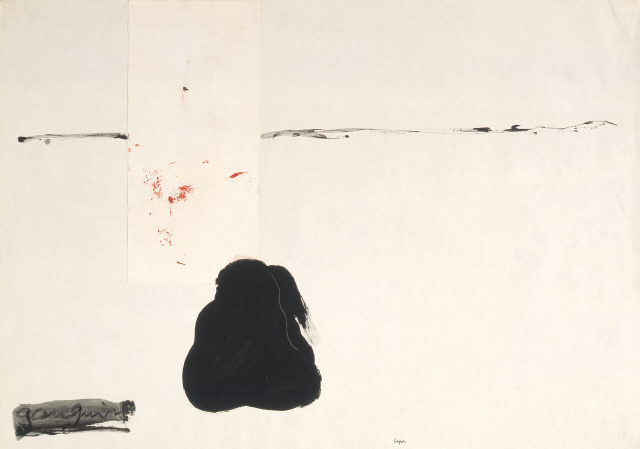The suggestion for the title of this series of paintings, drawings and collages came from a comment made to Lapa by the art critic Fernando Pernes, in an article published in the journal Colóquio-Artes (June 1978). Here, Pernes spoke of Lapa as “raising the ghost” of Paul Gauguin. But this drawing bears no reference whatsoever to the work of the French painter. Rather, here Lapa re-utilises one of his recurrent visual symbols, a black silhouette, which also appears in the series Milarepa, the 11th century Tibetan saint. The black against the overwhelming presence of the empty white ground, traversed by a collage punctuated with red, opens up a space of absence. The indeterminate black form of a figure in a position of meditation contrasts with the white ground and the suggestion of a horizon. In the bottom right corner, the title Gauguin appears, as if to replace Lapa’s own signature. Here, as, in several other of Lapa’s works, the title functions evocatively, establishing resonances. It is not Gauguin’s work that concerns Lapa, but rather the example of a person who abandoned his roots in Western civilisation, just as Lapa had abandoned his native city, Évora. As in the series Auto and Auto-Auto-Retratos [Self-Self-Portraits], in the evocation of an artistic doppelganger, Lapa reflects on the nature of self-representation and identity as means for the attainment of self knowledge.
AS

